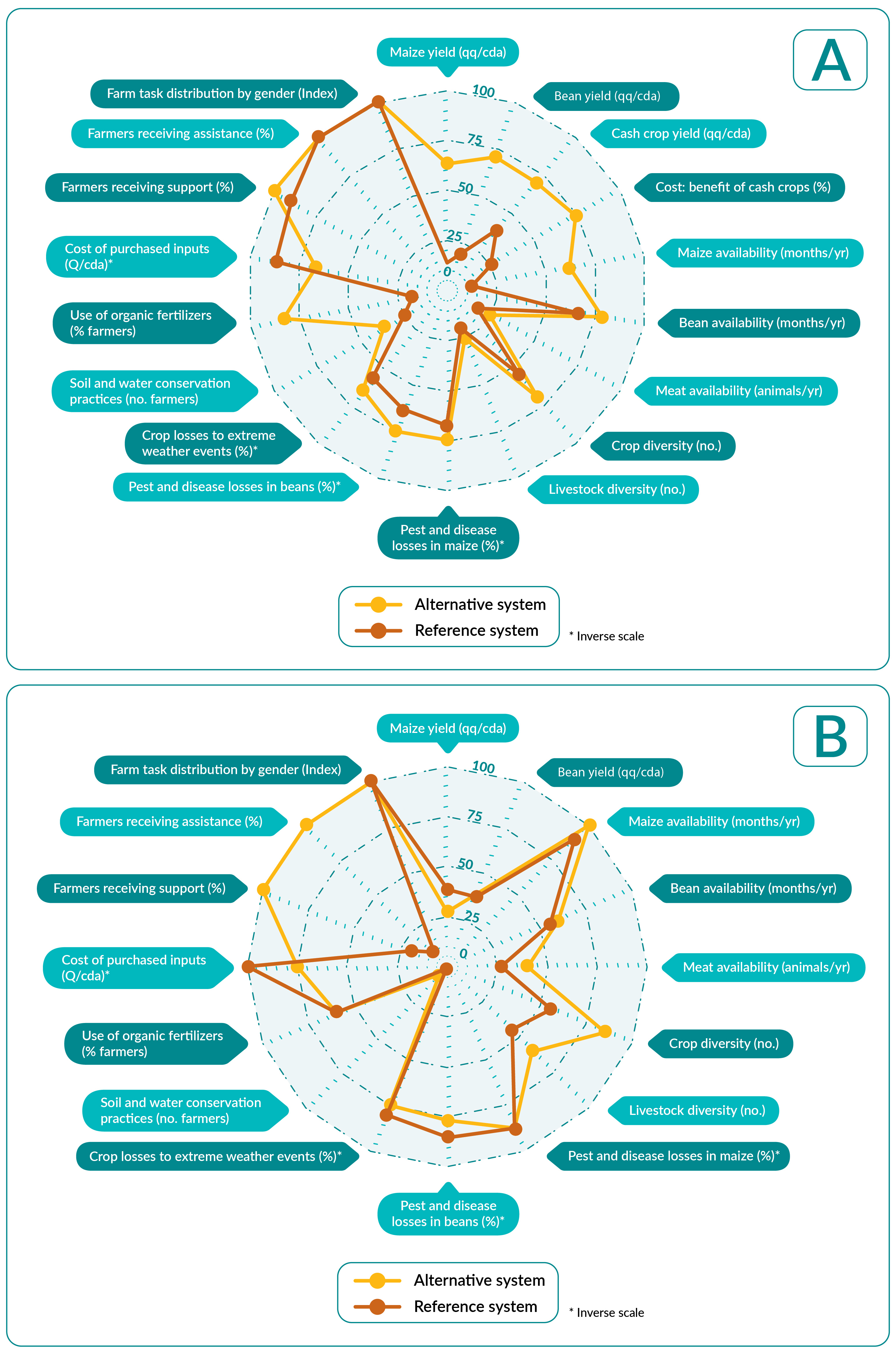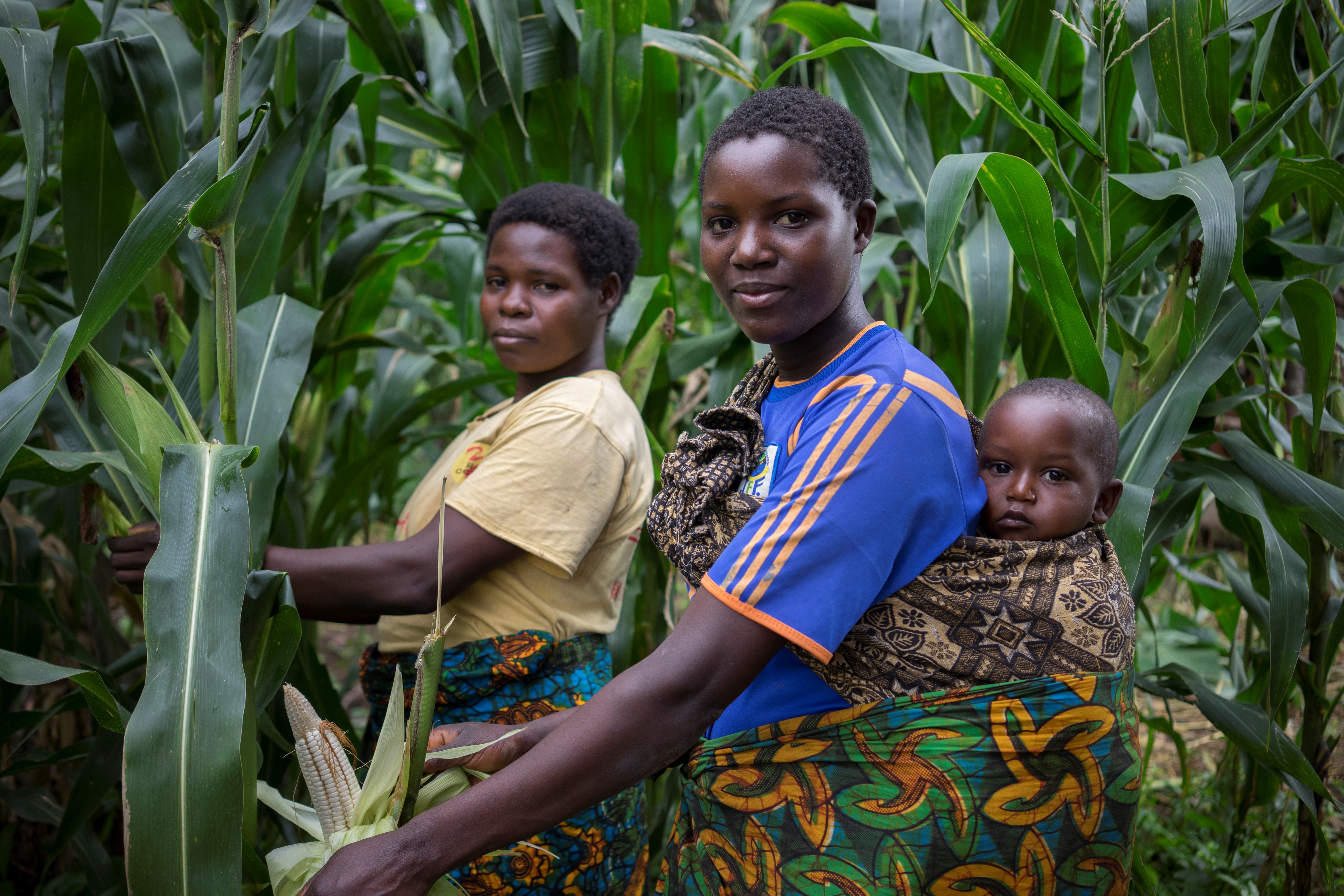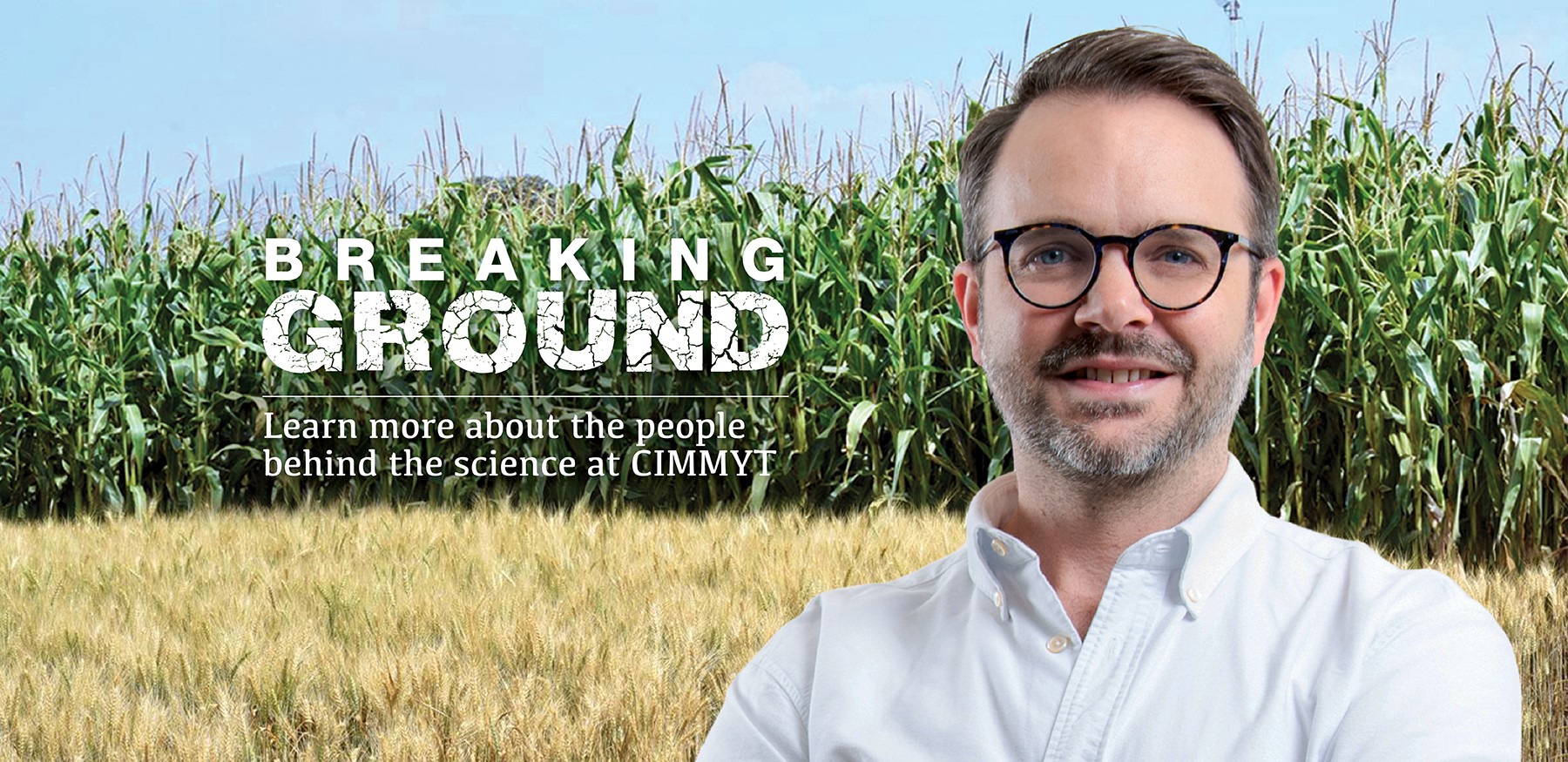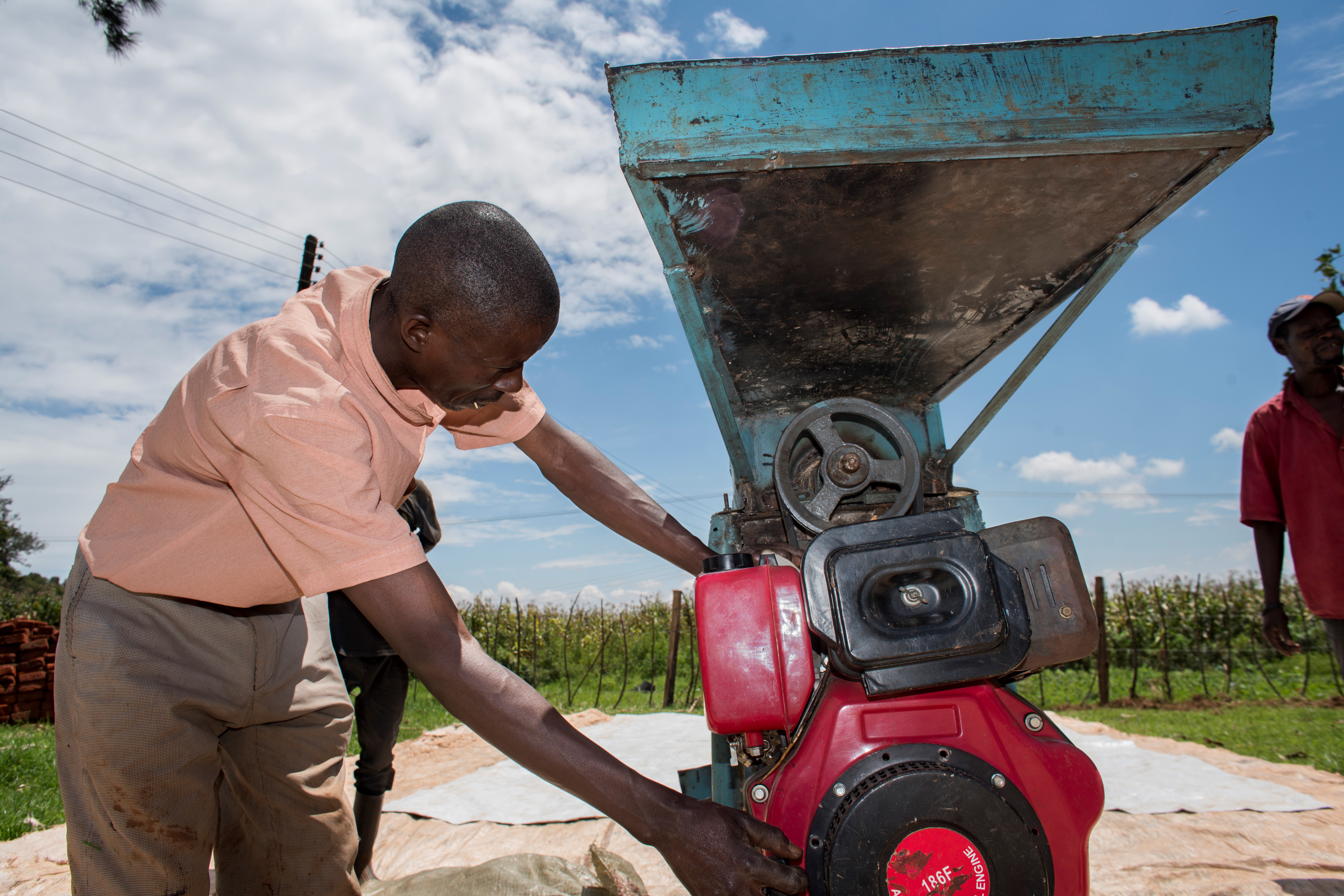By 2050, the world’s population could grow to 9.7 billion, food demand is expected to increase by 50% and global demand for grains such as maize, rice and wheat could increase by 70%. How can we meet the food and nutrition demands of a rising population, without negative environmental and social consequences?
Sustainable intensification is an approach using innovations to increase productivity on existing agricultural land with positive environmental and social impacts. Both words, “sustainable” and “intensification,” carry equal weight.
CIMMYT conducts research on sustainable intensification to identify ways farmers can increase production of crops per unit of land, conserve or enhance important ecosystem services and improve resilience to shocks and stresses, especially those due to climate change and climate variability.
For example, CIMMYT’s research on sustainable intensification in India has helped shape policies that increase farmer income while reducing pollution and land degradation.
What is the scope of sustainable intensification?
Sustainable intensification takes into consideration impact on overall farm productivity, profitability, stability, production and market risks, resilience, as well as the interests and capacity of individual farmers to adopt innovations. It is not limited to environmental concerns, but also includes social and economic criteria such as improving livelihoods, equity and social capital.
Certain methods and principles are needed to achieve the goals of sustainable intensification. In collaboration with farmers and other change actors, CIMMYT carries out research-for-development projects to test and scale a range of technologies and approaches that contribute to these results. The research focuses on combined resource use efficiencies of crop production inputs: land, plant nutrients, labor and water.
One example is conservation agriculture, the combination of crop diversification, minimal soil movement and permanent soil cover. International scientific analysis has found that conservation agriculture can, in many places with different characteristics, play a crucial role towards achieving the United Nations Sustainable Development Goals.
Crop and system modeling, geographic information systems, remote sensing, scale-appropriate mechanization and socioeconomic modeling are some of the approaches that contribute to the design and evaluation of sustainable intensification alternatives in current farming systems.

What are some more examples?
Several interventions by CIMMYT aim at safeguarding biodiversity and protecting — in some cases increasing — ecosystem services crucial for small-scale farmers’ livelihoods and the health of all. Others have studied the impact of landscapes on dietary diversity and nutrition. Yet others have developed appropriate small-scale machines, allowing farmers to save time, costs and labor associated with agriculture to increase yields, halt the expansion of the agricultural frontier and invest in new opportunities.
How is sustainable intensification different from ecological intensification, agroecological intensification or climate-smart agriculture?
Sustainable intensification, ecological intensification and agroecological intensification strive for the same general goal to feed an increasing population without negative environmental and social consequences, but they place emphasis on different aspects.
Ecological intensification focuses on ecological processes in the agroecosystem. Agroecological intensification emphasizes a systems approach and strongly considers social and cultural perspectives.
Climate-smart agriculture and sustainable intensification are complementary, but climate-smart agriculture focuses on climate stress, adaptation and mitigation.
Sustainable intensification can be achieved with a range of methods, including these concepts. It is one strategy among many for global food system transformation.
What is the history of CIMMYT’s research on sustainable intensification?
In the 1960s, the Green Revolution brought high-yielding crops to some regions of Latin America and South Asia, allegedly saving millions from starvation. Yet the Green Revolution had unintended environmental and social consequences. Critics of the Green Revolution argued these cropping techniques were highly dependent on external inputs, fossil fuels and agrochemicals, causing environmental damage through overuse of fertilizers and water, and contributing to soil degradation.
In the 1980s, CIMMYT scientists began placing stronger emphasis on environmental and social aspects — such as conserving soil and water, and ensuring social inclusion of marginalized groups — recognizing their importance to sustain the intensification of crops in South Asia. It was understood that sustainability includes improving the livelihoods of rural people who depend on these natural resources, in addition to better resource management. CIMMYT began to take these considerations to the core of its work.

Are these practices successful?
Sustainable intensification can boost yields, increase farmers’ profits and reduce greenhouse gas emissions. The reduction of greenhouse gas emissions can be achieved by increasing nitrogen use efficiency, which also reduces groundwater pollution.
Research from CIMMYT’s SIMLESA project has shown that conservation agriculture-based sustainable intensification practices led to a 60-90% increase in water infiltration and a 10-50% increase in maize yields in Malawi. In Ethiopia, crop incomes nearly doubled with crop diversification, reduced tillage and improved varieties, compared to using only one of these practices.
According to research from Stanford University, agricultural intensification has avoided emissions of up to 161 gigatons of carbon from 1961 to 2005. CIMMYT research shows that India could cut nearly 18% of agricultural greenhouse gas emissions through sustainable intensification practices that reduce fertilizer consumption, improve water management and eliminate residue burning. Zero-tillage wheat can cut farm-related greenhouse gas emissions by more than 75% in India and is 10-20% more profitable on average than burning rice straw and sowing wheat using conventional tillage.
A CIMMYT study in Science shows that thousands of wheat farmers in northern India could increase their profits if they stop burning their rice straw residue and adopt no-till practices, which could also cut farm-related greenhouse gas emissions by as much as 78% and lower air pollution. This research and related work to promote no-till Happy Seeders led to a 2018 policy from the government of India to stop farmers from burning residue, including a $166 million subsidy to promote mechanization to manage crop residues within fields.
In light of this evidence, CIMMYT continues to work with stakeholders all along the value chain — from farmers to national agricultural research organizations and companies — to promote and scale the adoption of practices leading to sustainable intensification.
Cover photo: Irrigated fields under conservation agriculture at CIMMYT’s CENEB experiment station near Ciudad Obregón, Sonora, northern Mexico. (Photo: CIMMYT)


 Gender equality, youth and social inclusion
Gender equality, youth and social inclusion 

